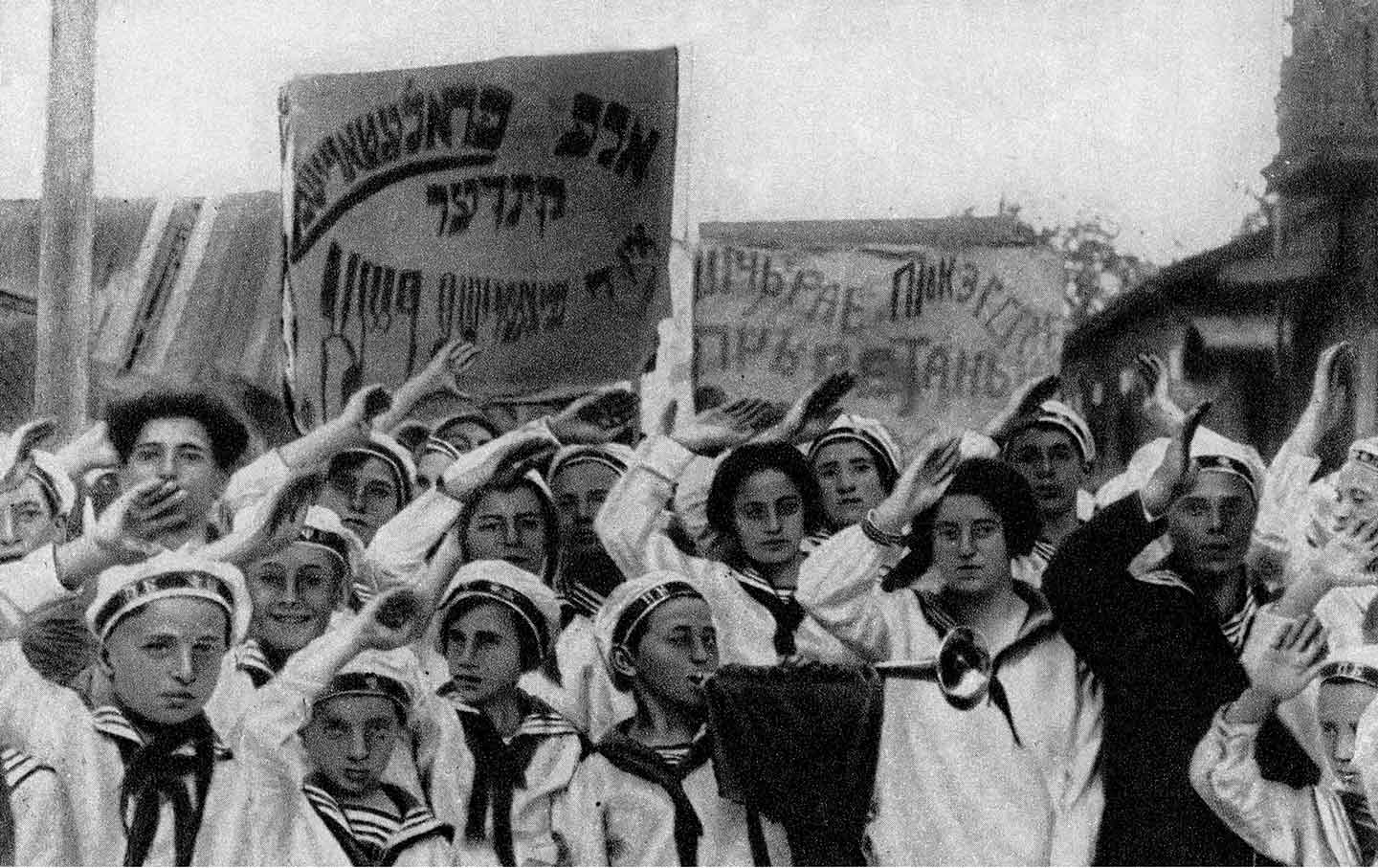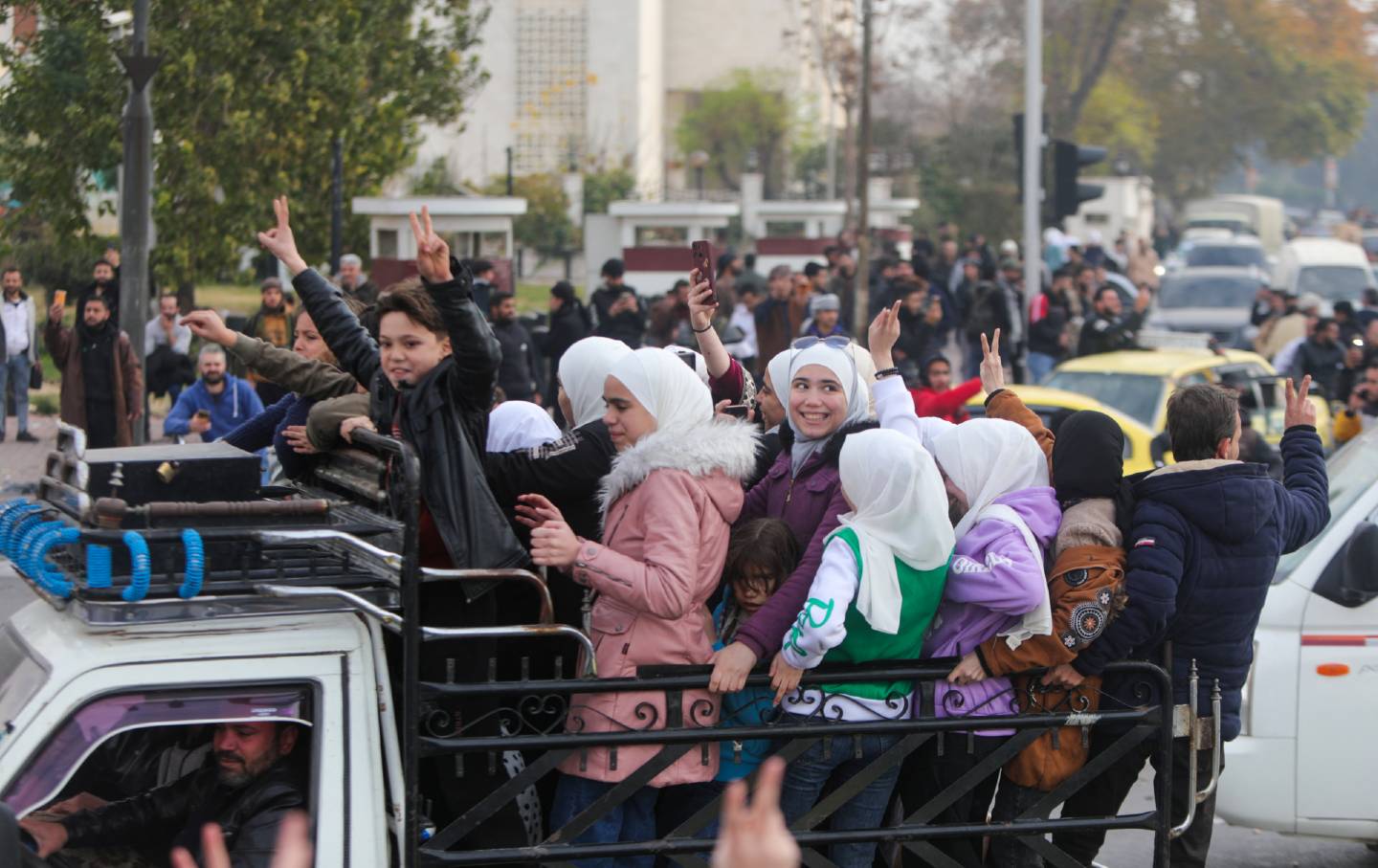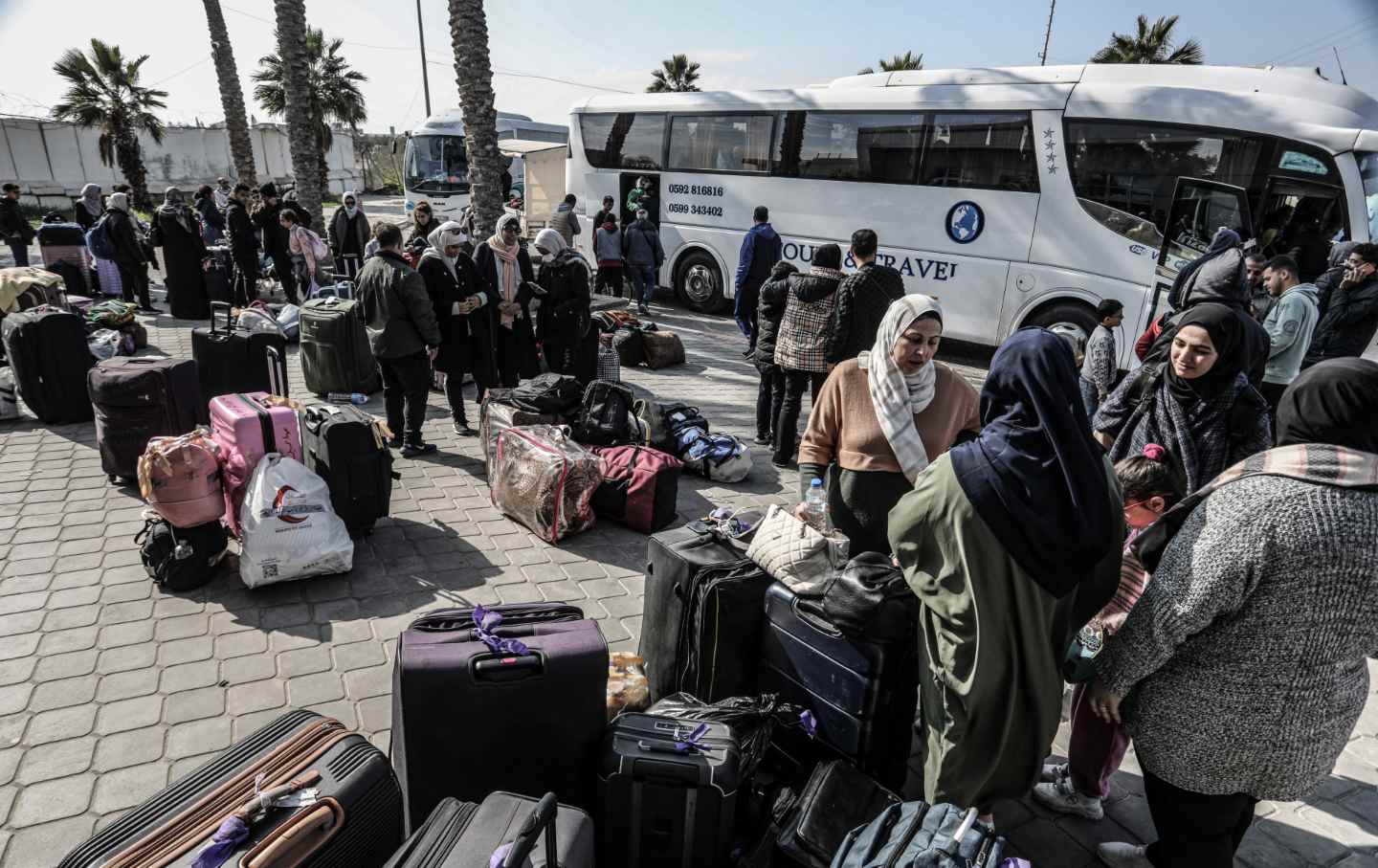A New World
The Soviet remaking of the Pale Jews.
The Saga of the Pale and Soviet Jews
The trials and tribulations of a tumultuous period.

Jewish children in the Soviet Union’s youth movement in Minsk.
(Getty)Established in 1791 as the exclusive zone where Jews were allowed to live in the Russian Empire, the Pale of Settlement was a giant ghetto. Jews in the Pale were largely not allowed to own land or to farm. They were, for the most part, restricted to a set of villages and to a limited number of occupations. Poverty was a constant fact of life. Any hope of escaping it remained elusive. Pale Jews were vulnerable to spontaneously instituted laws and to outbursts of violence by their Slavic neighbors. When they could, many fled in droves to Western Europe, North America, and anywhere that would have them.
Books in review
How the Soviet Jew Was Made
Buy this bookAnd yet, for millions upon millions of others, the Pale of Settlement was home and it contained within its boundaries their history. Beyond all the squalor was a thriving culture, a world defined by rituals, religious or otherwise. Quiet Sabbaths with shops closed and candles glowing in windows. Seasonal cycles of holiday fasts and feasts. Lively market days, close-knit communal life, village squabbles. This world was the world of my ancestors. Most of them fled, and those who stayed found the Pale fleeing from them: In 1917, the Pale of Settlement was dissolved by the Bolsheviks.
What seemed permanent disappeared. Suddenly my great-grandparents’ generation found itself with undreamed-of economic, social, and political opportunities. They could move freely within the USSR, and many migrated to major cities in Russia and other newly socialist republics. They were now Soviets, and they rushed to embrace this identity and put all that unhappy past behind them. My great-grandparents became devout communists with reason to hope that their lot as Jews would improve under the new socialist regime. The Bolsheviks promised to eradicate anti-Semitism and allow Pale Jews to exercise their cultural and religious traditions while being granted the rights of equal citizens. Yiddish culture—literature, music, theater—flourished in the young Soviet state, even if, for many Pale Jews like my great-grandparents, the past was the past and they were eager to embrace the future.
When Stalinist policies turned against the USSR’s Jewish citizens, the need to suppress and forget one’s Pale and Jewish pasts became even more pronounced. To be Soviet meant that one would no longer speak Yiddish, attempt to preserve cultural traditions, or, God forbid, practice a religion. One was no longer even a former Pale Jew, just a Soviet citizen. Even the region once called the Pale of Settlement had been erased from the maps as well as from memory.
This sudden loss of history and culture is why people say that we formerly Soviet Jews have a “thin” identity, scrubbed of religious or cultural content. Indeed, my family was almost entirely secularized, although they continued to socialize most closely with other Jews. During my years growing up in the United States following my family’s emigration in 1991, my “Jewishness” remained incoherent to me, beyond being the reason for my family’s peregrinations over the past century. And yet, when I see other people like me, I don’t look for differences despite the vast variations in assimilation, tradition, and politics among us. Instead, I always stupidly think, “We are brothers.” I feel inappropriately loyal; I feel less alone. We are, together, something from somewhere.
What are the factors that bring us together? Exactly how did we get to be like this? Based on the title, one might think that Sasha Senderovich’s How the Soviet Jew Was Made would explore, if not answer, some these questions. Perhaps it might tell us about the process through which the Pale Jew became the Soviet Jew and maybe even give us clues as to what it might mean to be from a family of Pale and Soviet Jews living in a world with neither the Pale of Settlement nor the Soviet Union. Yet as a work of literary history, How the Soviet Jew Was Made does not exactly do that. The question Senderovich sets out to answer turns out to be of a much more literary and scholarly nature: How was the “figure” of the Soviet Jew characterized in films and literature between the Russian Revolution and World War II? Though we read about a variety of fascinating, lesser-known literary and cinematic works about newly Soviet Jews, we are not left with a good understanding of how Pale Jews stopped being Pale Jews and how Soviet Jews became Soviet Jews. Instead, Senderovich’s focus on a narrow group of characters in the literature and films he examines leaves us even less certain—for the “figures” he is interested in are not clearly representative of Soviet or Pale Jews, let alone how they were made.
How the Soviet Jew Was Made begins with David Bergelson’s 1929 novel Judgment, which Senderovich cotranslated with Harriet Murav. The chapter, titled “Haunted by Pogroms,” uses Judgment, set during the Civil War, to capture the ambivalence and precarity that Jews experienced in the early years of the Bolshevik regime.
Judgment takes place in a fictional shtetl called Golikhovke, on the new border between Poland and Ukraine. With much of the town’s former economic activity now illegal, many of its residents support themselves through the smuggling economy, moving people and goods across the border. Another group that is also moving people and goods is a local cell of Socialist Revolutionaries, who have smuggled an insurgent into the town to help them fight the Bolsheviks in the region. Jews supportive of the SRs are anxious about the insurgent’s return from Poland, because while he may be a fellow traveler, he is also well known for being a pogromist and inciting and participating in anti-Jewish violence.
Meanwhile, the Bolsheviks have stationed a secret police leader and his men in the ruins of a monastery that overlooks the shtetl. The commander begins to mete out “judgments” on residents of Golikhovke whose livelihoods mark them as being disloyal to the regime or as enabling the SRs. Golikhovke’s Jews now find themselves torn between the SRs and their anti-Semitic insurgent on the one hand, and the Bolsheviks and their zealous police commander on the other. Either side bodes poorly for them.
While many people at the time read Bergelson’s novel as a celebration of the new Soviet state through its heroic portrayal of the police commander, Senderovich offers a different interpretation of Judgment, pointing to its focus on the ambivalence of Pale Jews as they become Soviet Jews and are forced to find new allies in an ever-changing society. When the commander rounds up Golikhovke’s Jews to announce his crackdown on smuggling in the town, the reader learns about what he’s saying only through hearsay, rather than being treated to a stream of instructive propaganda on why smuggling is bad. The import of the commander’s speech is reduced to a simple fact: The Bolsheviks are now the ones in charge, and they will enforce their will to the full extent. The book’s conclusion is equally ambiguous: Judgment ends with the police commander martyring himself in a suicide mission against the insurgent’s counterrevolutionary forces, who have indeed embarked upon a rampage against Golikhovke’s Jews. Lacking trust in either side, the Jews are not inspired by his heroic act, and Judgment ends with another Bolshevik speech, which is mostly drowned out by the wind. The Jews of Golikhovke have already heard enough.
This anxiety and precarity would persist in the years to come. While the Soviet Union celebrated visions of ethnic equality, Jews would remain the objects of constant suspicion. One typical early-Soviet solution to the age-old Jewish question was Birobidzhan. Located in the Far East, near Russia’s border with Manchuria, the newly created Jewish Autonomous Region—where Jews were encouraged to resettle—expressly promised autonomy. In truth, it was essentially a Potemkin village where Jews were sent to disappear from society. When the new settlers arrived, they found that they had to compete for land with the existing Indigenous, Cossack, Korean, Ukrainian, and Russian populations. There was little infrastructure to speak of and a very harsh climate. Indeed, more than half of the first wave of Jewish settlers left. By 1932, those who braved the conditions had established a number of cultural institutions, including six Yiddish schools. However, during Stalin’s postwar anti-Semitic campaign against the “rootless cosmopolitans,” nearly all of these institutions were liquidated. In the rest of the Soviet Union, Soviet Jews were not much more welcome: Bergelson, who had once been heralded as a champion of Soviet Yiddish literature, fell victim to this campaign and was executed in 1952, on his 68th birthday.
The story of Birobidzhan is told in How the Soviet Jews Were Made through the writings of Semyon Gekht and Viktor Fink. Together, they were dispatched to Birobidzhan in 1929 for the purpose of generating propagandistic literature. Judging from the resulting books, neither man seems to have discovered anything concrete to propagandize about.
Popular
“swipe left below to view more authors”Swipe →In Jews in the Taiga, Fink found so little to write about when it came to the region’s Jews that he focused much of his energy on the Amur Cossacks, a stateless ethnic minority exiled to Birobidzhan in the mid-19th century. Meanwhile, in his novel A Ship Sails to Jaffa and Back, Gekht also struggled to focus on Birobidzhan alone and instead juxtaposed, Senderovich writes, “the apparent successes of the Jewish settlement…with Zionist efforts to establish a Jewish national home in Palestine.” The novel tells the story of Alexander Gordon, who leaves the Pale of Settlement for Palestine ahead of the Russian Revolution, only to return to the USSR in order to live in Birobidzhan. Yet most of the novel takes place not there but in Palestine.
The absence of things to say about the experiences of Soviet Jews living in Birobidzhan is emblematic of what Senderovich calls their “non-arrival”: “The Soviet Jew was not a figure who successfully settled in a place that the USSR designated as his home, but one who never arrived…. As Birobidzhan drew international attention, the figure of the Soviet Jew became defined by his non-arrival and continued wanderings, across the USSR and around the world.” We are meant to take this as a metaphor for the Jews’ larger lack of a place in the world and their inability to fit into the role set out for them by the Soviet regime. However, is this “non-arrival” a characteristic of Soviet Jews in general or is it the result of the absurd peculiarities of the Birobidzhan experiment? Would these Jews have been as “non-arriving” if they’d been given somewhere to go that wasn’t in the middle of the taiga? Can these claims about “non-arrival” really extend to the majority of Soviet Jews, who by and large did not go to Birobidzhan? Do we consider Jews who emigrated to the United States, for example, to be defined by their “non-arrival…around the world”? Complicated as their existence there was, my family, by all reports, was happily settled in Baku, which they’d fled to around the time of the Revolution. Ultimately, it can be argued that the story of Birobidzhan says more about the Soviet state than it does about the Jews who didn’t want to live there.
While the close readings of Bergelson’s novel and the books by Fink and Gekht are fascinating, at times the conclusions Senderovich draws from them do little more than rehash what we have long heard about “the Jewish experience” from all eras—not just those in the Pale of Settlement and the Soviet Union. Namely, that Jews “wandered” and felt alienated and precarious where they lived.
This tendency is also present in Senderovich’s discussion of the figure of the Soviet Jew in film, and in particular 1932’s The Return of Neitan Bekker, one of the first sound films produced in the USSR. A narrative of return that also serves as a critique of capitalism and the West, the film begins with the title character returning to his native shtetl after living for a period in New York City. Neitan returns unconvinced about the superiority of socialist society. But his father, who stayed behind, is an ardent Soviet and serves as a kind of ideological mentor to him. Strangely, while Neitan represents the ambivalence of the new Soviet Jew, Senderovich does not consider how Neitan’s father (who, he notes, has been “successfully reforged as a kind of diminutive Jewish version of the New Soviet Man”) might represent a different kind of Soviet Jew—one equally emblematic of the experience of many real Jews as well. Instead, for Senderovich, the representative figure here is Neitan, whose conversion to the Soviet creed remains always plagued by doubt.
Neitan, Senderovich tells us, is “a figure who has been ‘converted’ and changed but who can never be fully made over…one whose existence calls into question the transformative power of the Soviet project,” just as the Jews’ refusal of Birobidzhan allegedly had. While this description is surely true of some or even most Soviet Jews, the reasons behind their difficulties in assimilating remain vague. Would they still hold true generations later? Also, considering the fact that Jews were not the only ethnic minority in the USSR, one is left to wonder whether Jews were singular in their challenge to the Soviet project or whether their experience in the USSR once again tells us much more about the Soviet system than about specifically Soviet Jewish life.
The question of how representative Senderovich’s figures are becomes even more pronounced when one considers that his primary definition of “the figure of the Soviet Jew” intentionally excludes women. According to Senderovich, female characters do not embody the tendencies “associated with the emergent Soviet Jew,” who is always “coded as male.” Thus, the representations of Jewish women in early Soviet literature are irrelevant to understanding the Soviet Jewish experience. Never mind that women’s traditional roles were among the things that changed most radically in this historical transformation, or that by reading female Jewish authors from the period, Senderovich might have come to different conclusions.
Admittedly, the focus primarily on Jewish men in How the Soviet Jew Was Made isn’t especially shocking. As an academic discipline, Jewish studies has been markedly segregated by gender—and since most of the works that address Jewish women’s experience were written by women, they have traditionally been excluded from study. But it is now the year 5783 in the Jewish calendar—why not take the opportunity to rectify that imbalance if you claim to be shedding “light on the experience of Ashkenazi Jews during the first two decades of the Soviet era”?
This imbalance in How the Soviet Jew Was Made is particularly revealing when it comes to the most exciting and accessible work discussed in the book, Moyshe Kulbak’s The Zelmenyaners: A Family Saga—since, unlike Senderovich, Kulbak places a New Soviet Jewish woman at the very center of his narrative, both as a mouthpiece and as a catalyst for change.
Set in Minsk in the late 1920s and early ’30s, The Zelmenyaners tells the story of four generations of a Jewish family who cohabitate in a building with a courtyard as they adjust to, accommodate, or resist the inevitable destruction of their old ways of life and try to find meaning in the new ones. These generations range from a seemingly immortal great-grandmother to babies of mixed Russian and Jewish parentage, born out of wedlock under the star of communist free love.
The word “saga” in The Zelmenyaners’s subtitle belies its comic tone and fragmented structure. There isn’t much of a plot; instead, we follow a lurching series of comic incidents as an elderly cohort of uncles and aunts kick and scream about giving up their old customs, while a younger cohort of cousins adapt to them, sometimes wholeheartedly, but with similarly humorous or disastrous results.
The novel also reminds us that ideological loyalties among the generations are not always simple or clear-cut. Even the book’s most devoted adherents to socialism are ultimately derided by literary critics for exemplifying their own idiosyncrasies rather than conscious ideological commitment. On this, Senderovich is right: “The novel dwells in discontinuity rather than coherence,” demonstrating that although Pale Jews “imbibe[d] Soviet ideology and shed retrograde traits, practices, and characteristics,” this did not automatically result in ideal Soviet citizens.
Yet despite the fragments and discontinuities, there are two extremely ideologically committed characters that offer a different view of the Soviet Jew, and one is also a woman. There is Bereh, a young man who is intended to exemplify the Socialist Realist hero, but there is also Tonke, a young woman who, Senderovich acknowledges, is not ambivalent about much of anything: She is the novel’s “chief doctrinaire character.” Tonke leaves Minsk for Vladivostok to “build socialism.” When she returns, she comes back bearing an infant of likely Russian parentage. Tonke is unbothered by what her family thinks of her, even though she continues to live in the courtyard, and she serves as an example of a different kind of Soviet Jew who is not uncertain or ambivalent about the new world birthed by the Soviet Union.
When Bereh reports their Uncle Foyle for pilfering from the newly socialized tannery, Tonke agrees to testify against him, and she uses that testimony to denounce the backwardness of Pale Jews in general. “For generations,” she says, “the Zelmenyaners have collected bits of this and that and built their world from it…. The courtyard subsists on leavings and scrapings, on the remnants of superstition and religion, on naively distorted scraps of scientific knowledge.” Their piecemeal existence is proof of their unreliability as political actors and their lack of a place in the future.
After this testimony, the Zelmenyaners have good reason to disown both family members. But they chase only Tonke away, calling her a “slut” and a “Jew hater.” With this, Kulbak demonstrates how, for Jewish women, the standards for inclusion in the community end up being higher and more stringent. Already marginal because of their lack of religious training, women are considered capable of the greatest possible betrayal—one tantamount to anti-Semitism—which can render them non-family and even non-Jews. In documenting Tonke’s trials and tribulations, Kulbak shows how Soviet Jewish women are as central to the story of the making of Soviet Jews as Soviet Jewish men. Already on the margins, Jewish women were willing to manifest the convictions and defend the system that give them freedom and, crucially, a sense of coherence.
All of this makes one wonder why Senderovich does not spend more time focusing on Jewish women’s commitments as well as their male counterpart’s ambivalences. There are abundant examples of female Jewish socialists who wrote memoirs, female Soviet Jewish authors who wrote in the USSR and in emigration, and characters like Tonke. Even if they are far less known, there is no reason a scholar should not seek out these examples and put in the work to explore how half of the Soviet Jewish population experienced assimilation and the dismantling of Pale culture. Failing to do so by creating a schema that intentionally excludes women raises other questions too: What is the point of seeking out a kind of ethnography through literature if the selected works and the frame used to discuss them fail to reflect actual experience?
How the Soviet Jew Was Made closes with a discussion of Isaac Babel’s recurrent character Hershele Ostropoler, an archetypal Jewish trickster who serves as a stand-in for Babel. As Senderovich argues, the trickster is another figure of ambivalent ideological commitments, one determined to survive a variety of dangerous and precarious situations. Such cunning “yields ways of negotiating the horror, violence, and ideological coercion of the early Soviet years.” The trickster, Senderovich tells us, is “an embodiment and literary marker of instability, indirectness, and manipulation,” someone who is thus capable of creating—much like the Soviet Jewish figure that Senderovich is interested in—“new and unexpected meanings within the confines of state ideology” that call its “utopian promises into question.”
Yet what if the Soviet Jewish figure is this, but also something else? What if the trickster did not just call into question the culture’s utopian promises but sometimes—for better and worse—embraced them? What if the Soviet Jewish experience, especially as it shifted away from the Pale, was much more like the act of a trick—one that can be performed in many different ways and is full of competing meanings? In Kulbak’s The Zelmenyaners, one finds that the Soviet Jewish experience was so much more a matter of “odds and ends,” of new certainties as well as old suspicions. Reading the novel again, one can see not just one figure of the Soviet Jew but many. Their ideological tensions and conversions, their failed attempts to hold on to their past and each other and to give it all up—this was how, one realizes, the Soviet Jew was really made. Our “thin” identity, bereft of formerly central cultural or religious markers, was actually something more solid. Those blanks were filled in with affirmative replacements of what we had lost—new cultures, new ways of parsing and participating in traditions. We may have stopped being Pale Jews, but we never stopped being someone from somewhere.
More from The Nation

Celebrations in Syria May Be Premature Celebrations in Syria May Be Premature
The speed of the Assad dictatorship's collapse stunned even the opposition. But the result is a power vacuum that Israel and Turkey have already moved to occupy.

The Fall of Syria Changes Everything The Fall of Syria Changes Everything
Retired diplomat Chas Freeman and writer Pascal Lottaz discuss what happens now that Damascus is in the hands of Hayat Tahrir al-Sham.

Netanyahu Must Be Brought to Justice. But We Can’t Stop There. Netanyahu Must Be Brought to Justice. But We Can’t Stop There.
This genocide is a massive criminal undertaking, and we must hold as many of its perpetrators accountable as we can.

My Brother, Chef Mahmoud Almadhoun, Died Because He Fed Gaza’s Starving Citizens My Brother, Chef Mahmoud Almadhoun, Died Because He Fed Gaza’s Starving Citizens
His killing by Israel sent a chilling message that no one is safe, including humanitarians who stand in the way of Gaza’s erasure.

The Underground Network Helping Gazan Refugees Survive in Egypt The Underground Network Helping Gazan Refugees Survive in Egypt
A patchwork of volunteer-run mutual aid organizations has sprung up to tackle the severe problems facing people fleeing genocide.

The Dangers of Trump’s Foreign Policy The Dangers of Trump’s Foreign Policy
Strategic incoherence and factionalism reign.


